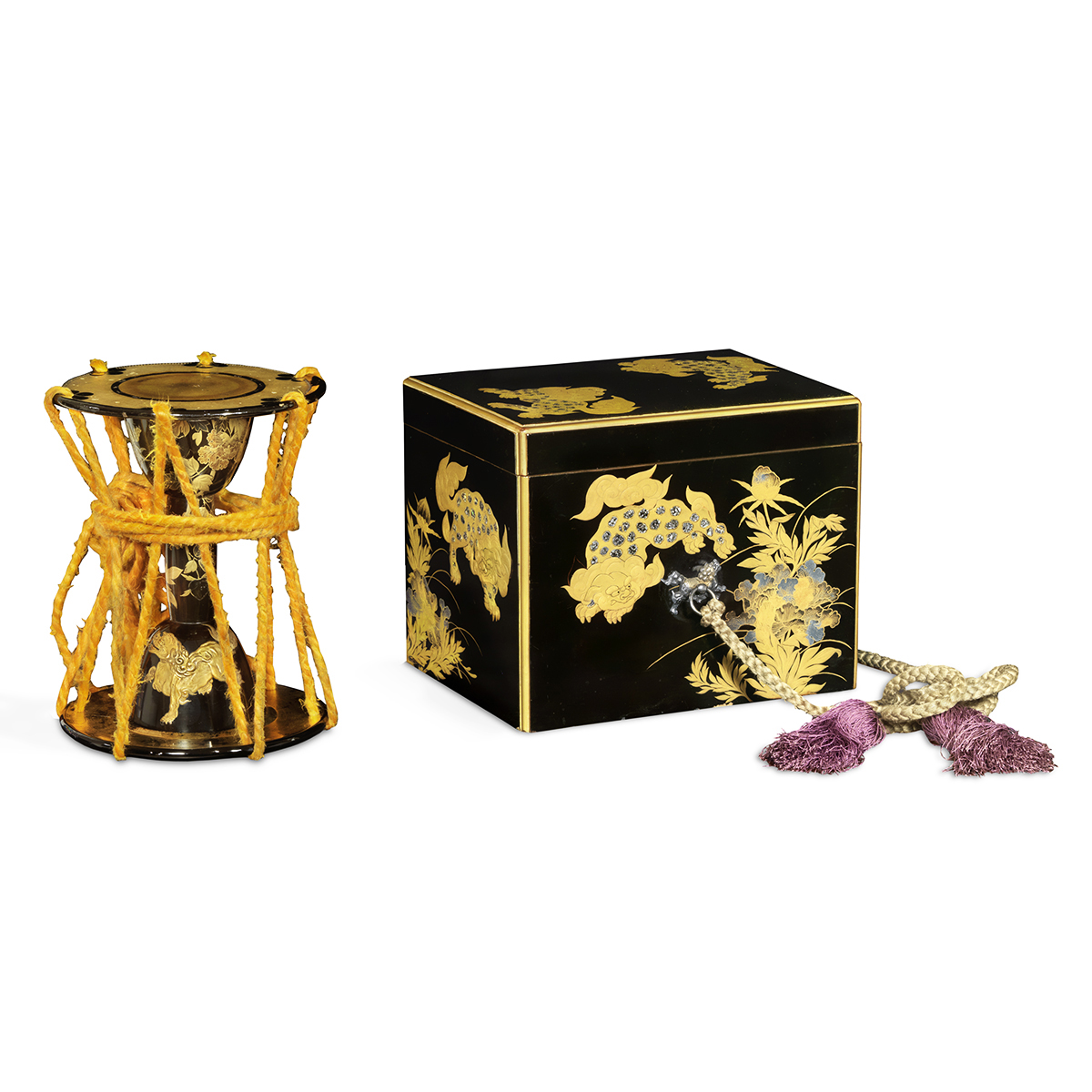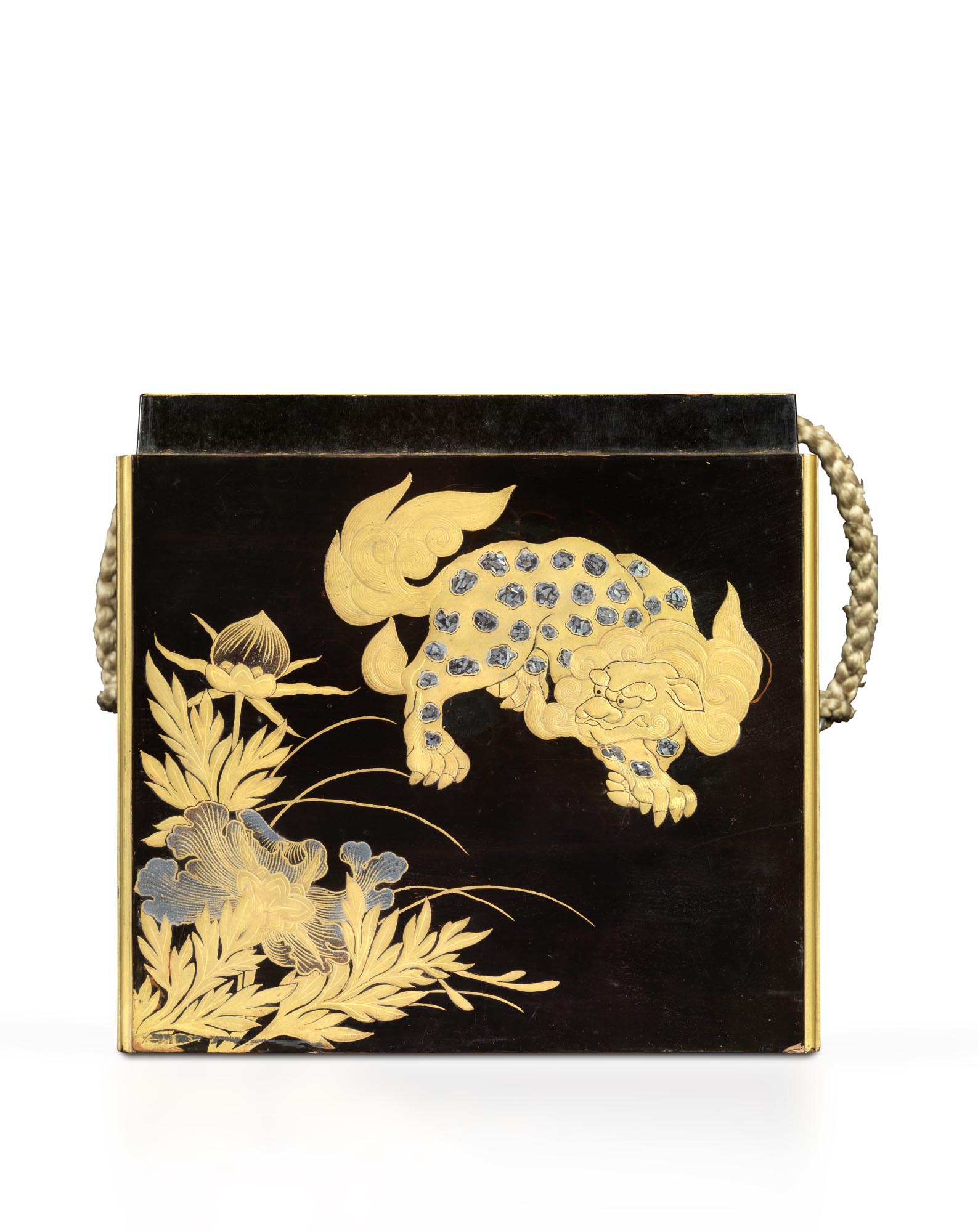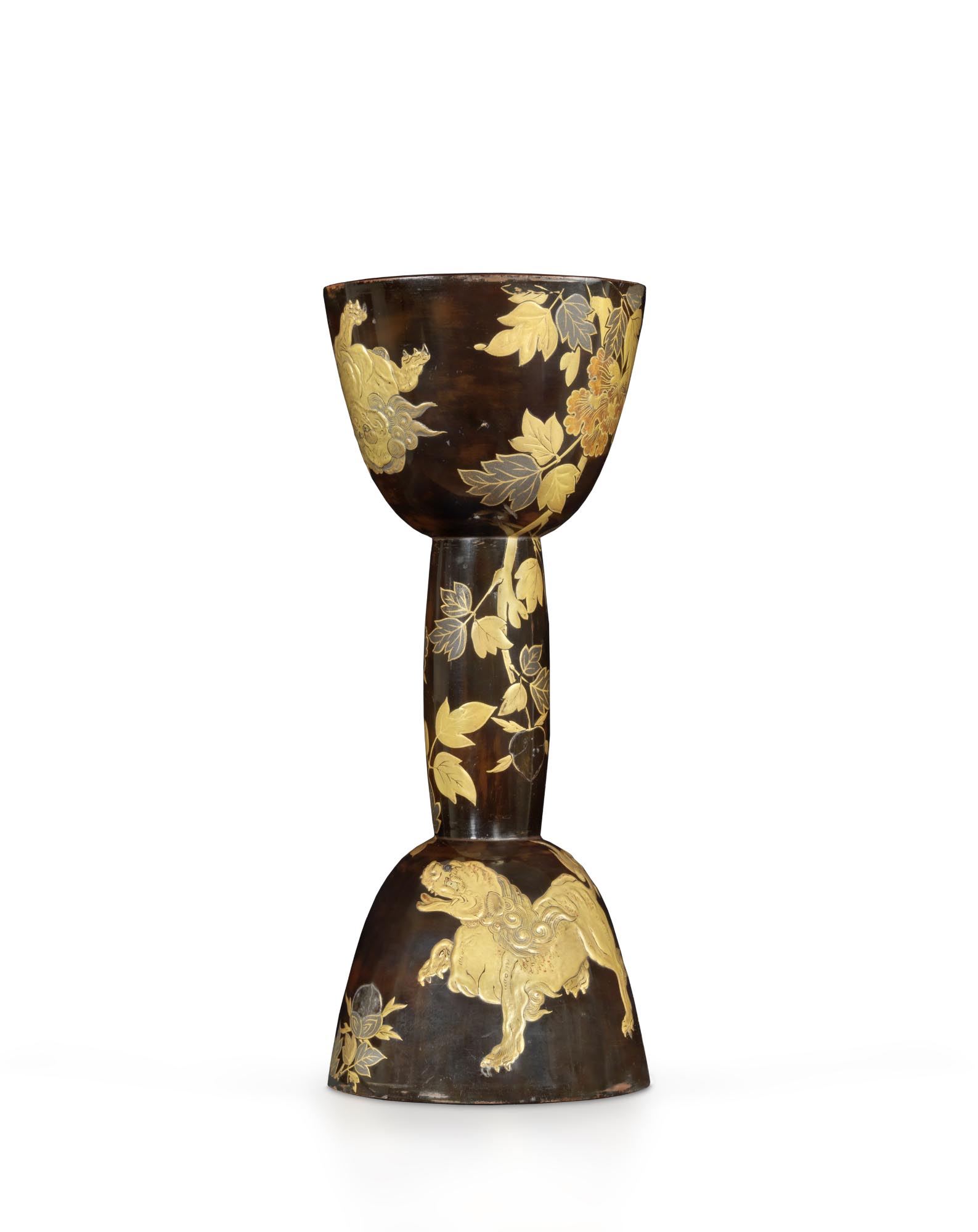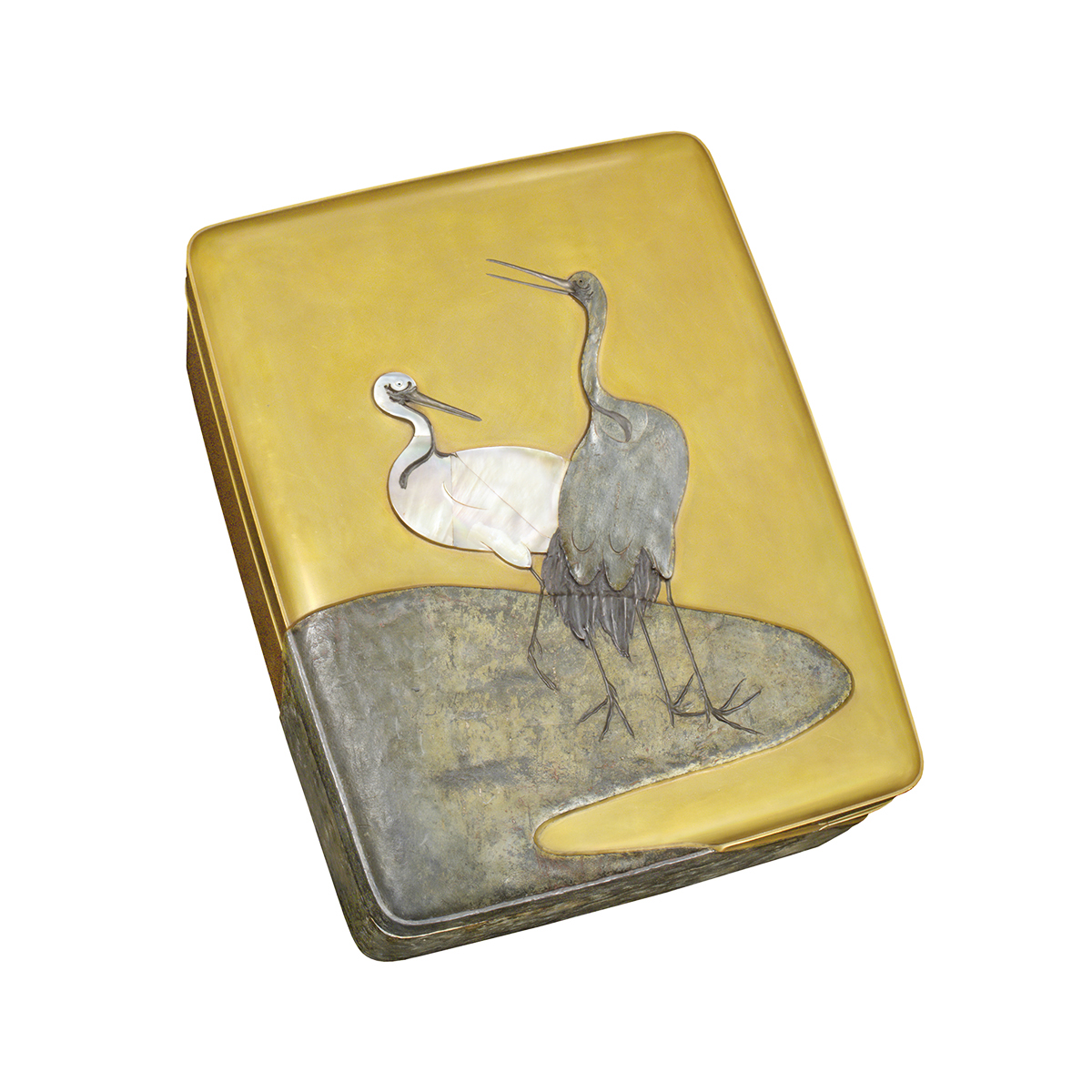Ko-Tsuzumi
Laque
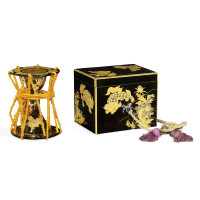

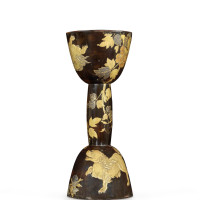
- Nous Contacter
-
Taille
Drum : H. 24.5cm, D. 10.1cm Box : 28.7 x 23 x 23.4 cm
-
Période
Edo period, 17th century
-
Boîtes
Original lacquered takamaki-e and maki-e storage box
Description
Hand drum with design of “shishi-botan” and Hotei inside the lid
Ko-tsuzumi (鼓) is a Japanese drum of Chinese/Indian origin. It consists of a cherry wood body shaped like an hourglass, and it is taut, with two drum heads which material is horse leather with cords that can be squeezed or released to increase or decrease the tension of the heads respectively. This mechanism allows the player to raise or lower the pitch of the drum while playing, not unlike the African talking drum.
Care for this instrument is peculiar in that the drum heads must be exposed to moisture to produce a desirable sound. Before playing the ko-tsuzumi, the player will breathe very close to the head that will be struck. Sometimes he will even take some saliva and apply it to the head of the drum. The quality of sound of the drum will depend on how much moisture is in the atmosphere where it is being played. To make sure the drum heads are moist, the player will breathe into the drum head at intervals when he is not playing.
The ko-tsuzumi plays roles in both Noh and Kabuki theatre music, but it is also used in min’yō (民 謡), or Japanese folk music.
This type is called Ko-tsuzumi. The face leather of Ko-tsuzumi has a circular groove called ‘Kannyu’ and forms a kind of annular membrane whose vibrational frequencies approach extremely precise harmonic relationships when the ratio of two annular membrane radii is less than 1.2.
The motif of shishi-botan is lacquered dynamically on the body of drum and the box. Shishi-botan, literally lion and peony, has been a very popular motif in Japan. Shishi was believed as the king of all animals. And also, peony was believed as the king of all flowers. The motif of shishi and peony has been called “shishi-botan’ or ‘karajishi-botan’. They were very often depicted together since ancient time. The original idea came from Buddhism. It was said that only one thing which could kill the strongest animal, shishi, was an insect in his body. And it was believed that the night dew of peony was the only one thing which can kill this insect. This motif was loved as a bold symbol and splendid combination.
Hotei was lacquered inside of the cover. Hotei was depicted quite round body shape with a big smile. It gives a viewer an impression that he is a person with a big heart. He is passing on the small bridge, looking up a bird. The composition of a willow, the bird, and Hotei is magnificent. The lines of the tree and bridge make a nice comparison with his round body.
